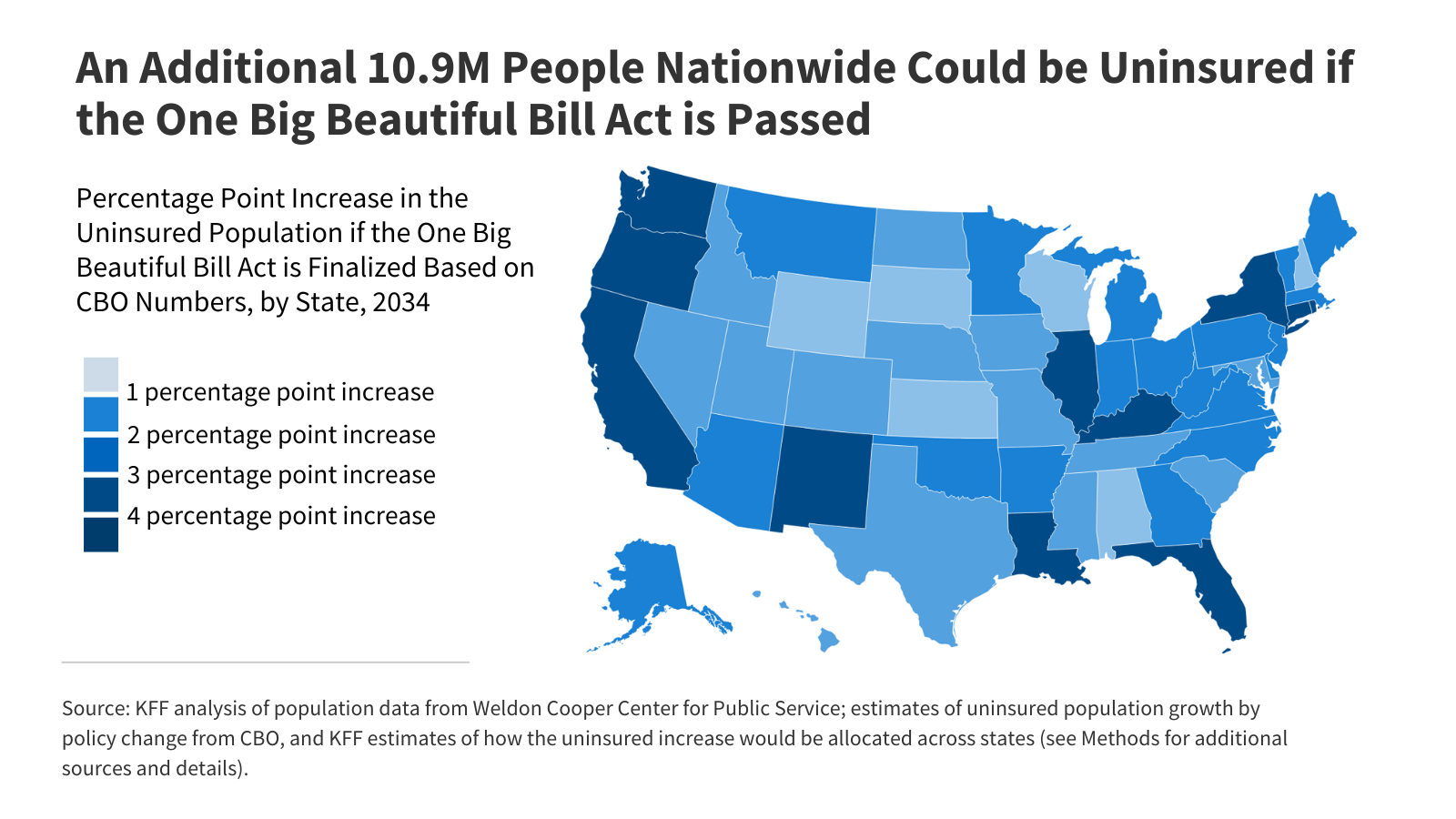Uninsured
Data and analysis
Reconciliation and the ACA, Medicaid, and Uninsured Rate
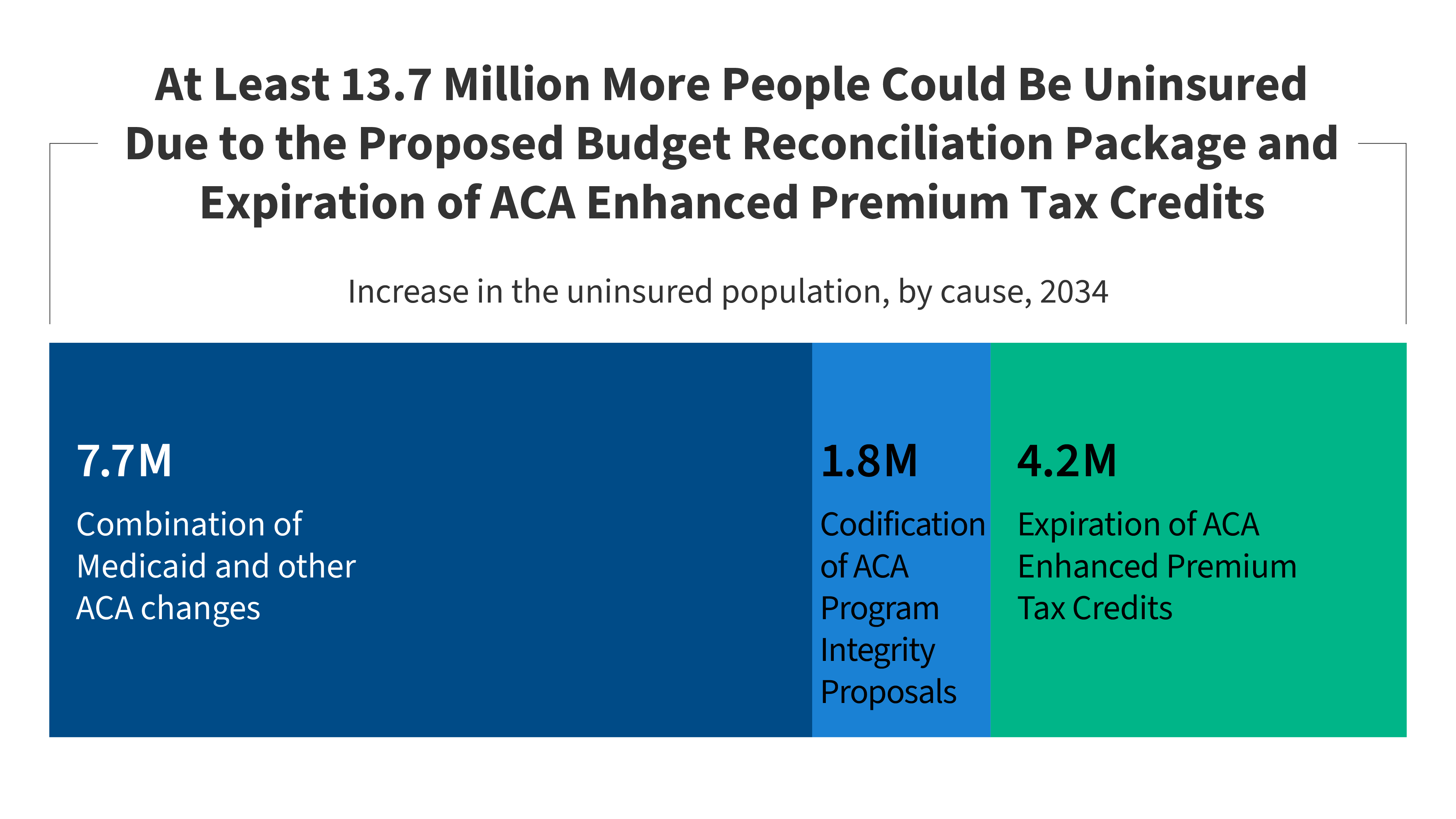 The CBO estimates that the proposed changes to Medicaid and the ACA in the budget reconciliation package will result in at least 13.7 million more uninsured people in the year 2034 than would otherwise be the case.
The CBO estimates that the proposed changes to Medicaid and the ACA in the budget reconciliation package will result in at least 13.7 million more uninsured people in the year 2034 than would otherwise be the case.Key Facts About the Uninsured Population
 The number of people ages 0-64 who were uninsured held steady at 25.3 million in 2023, although the number of uninsured children rose from 3.8 million to 4.0 million. Most uninsured people are in low-income families and have at least one worker in the family.
The number of people ages 0-64 who were uninsured held steady at 25.3 million in 2023, although the number of uninsured children rose from 3.8 million to 4.0 million. Most uninsured people are in low-income families and have at least one worker in the family.How Many Uninsured People Are in the Coverage Gap?
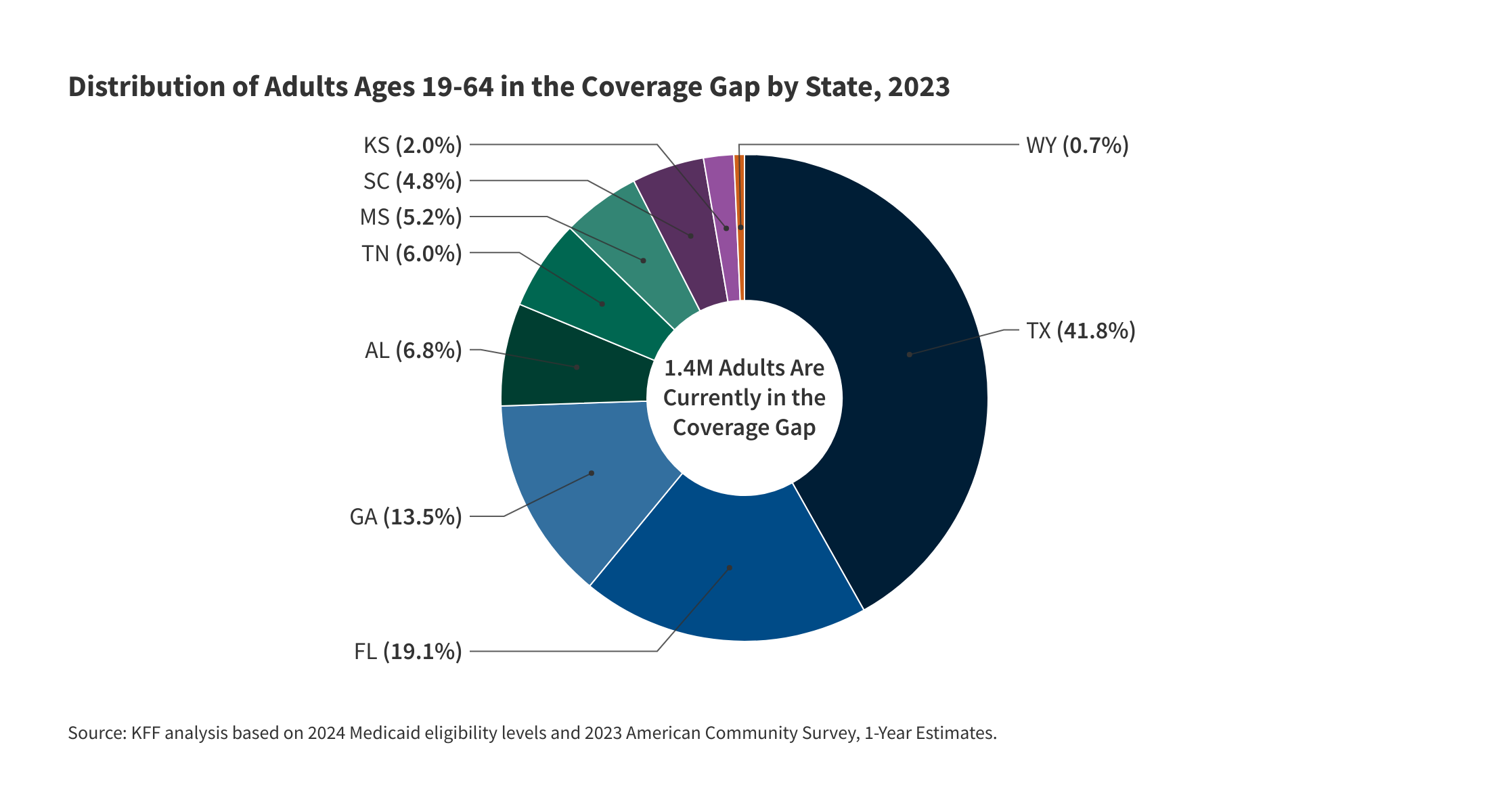
This analysis estimates that 1.4 million uninsured individuals in the 10 states without Medicaid expansion, including many working adults, people of color, and those with disabilities, remain in the “coverage gap,” ineligible for Medicaid or for tax credits that would make coverage ACA’s Marketplaces affordable to them.
How the Unwinding Affected Enrollees
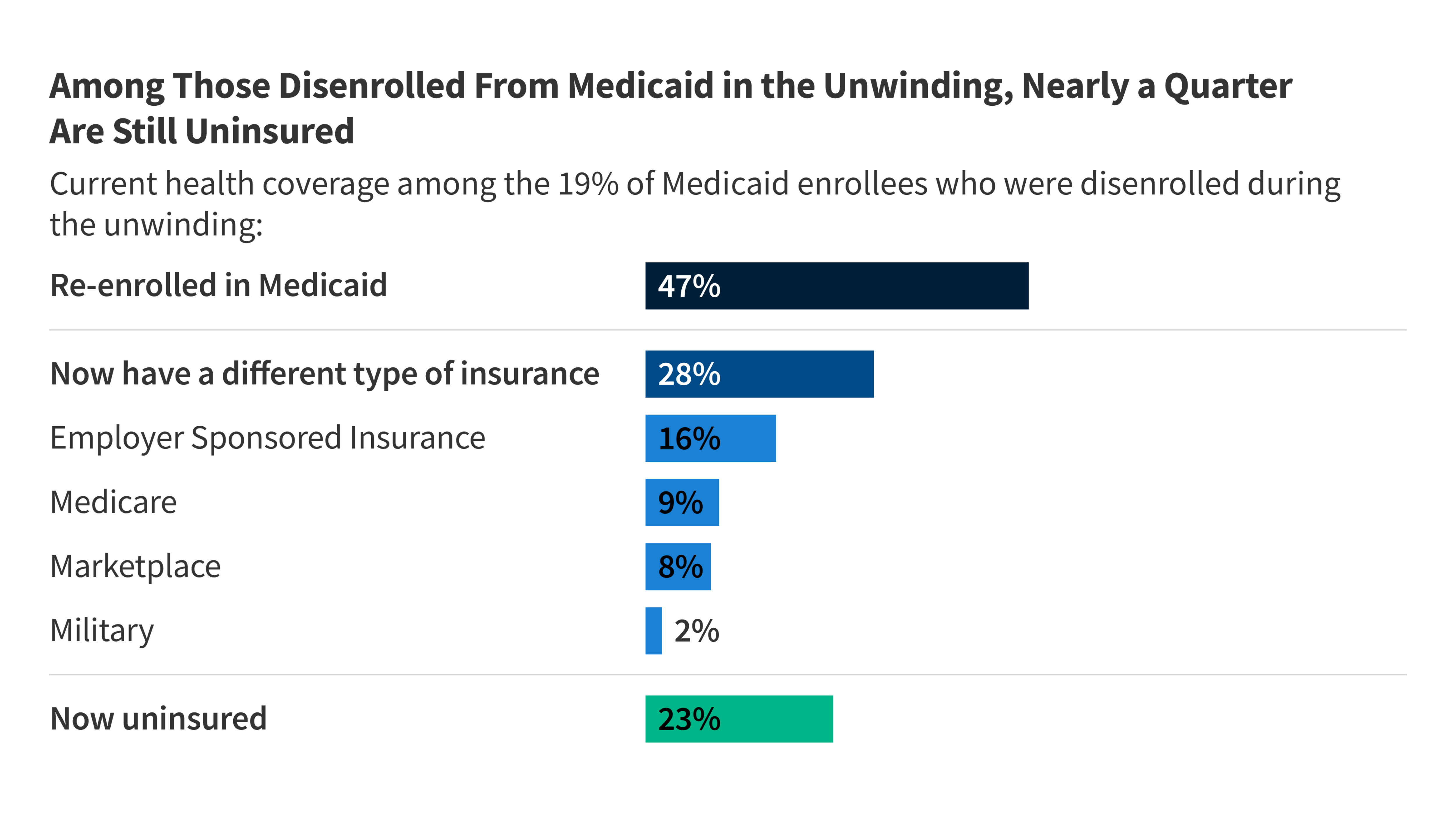 Over half who were disenrolled say they put off needed medical care while trying to renew Medicaid. Overall, 19% of adults who had Medicaid prior to the start of unwinding say they were disenrolled at some point in the past year. Of this group, a large majority (70%) were left at least temporarily uninsured.
Over half who were disenrolled say they put off needed medical care while trying to renew Medicaid. Overall, 19% of adults who had Medicaid prior to the start of unwinding say they were disenrolled at some point in the past year. Of this group, a large majority (70%) were left at least temporarily uninsured.
The uninsured: How costs affect care and health, 2022
Latest Polling10%
Percent of adults who reported not having health insurance
29%
Percent of uninsured adults who reported delaying or not getting care due to health costs
75%
Percent of uninsured adults who worry about medical bills if they get sick or have an accident
38%
Percent of uninsured adults who reported not having a usual source of care (vs. 8% of insured adults)
Latest News
-
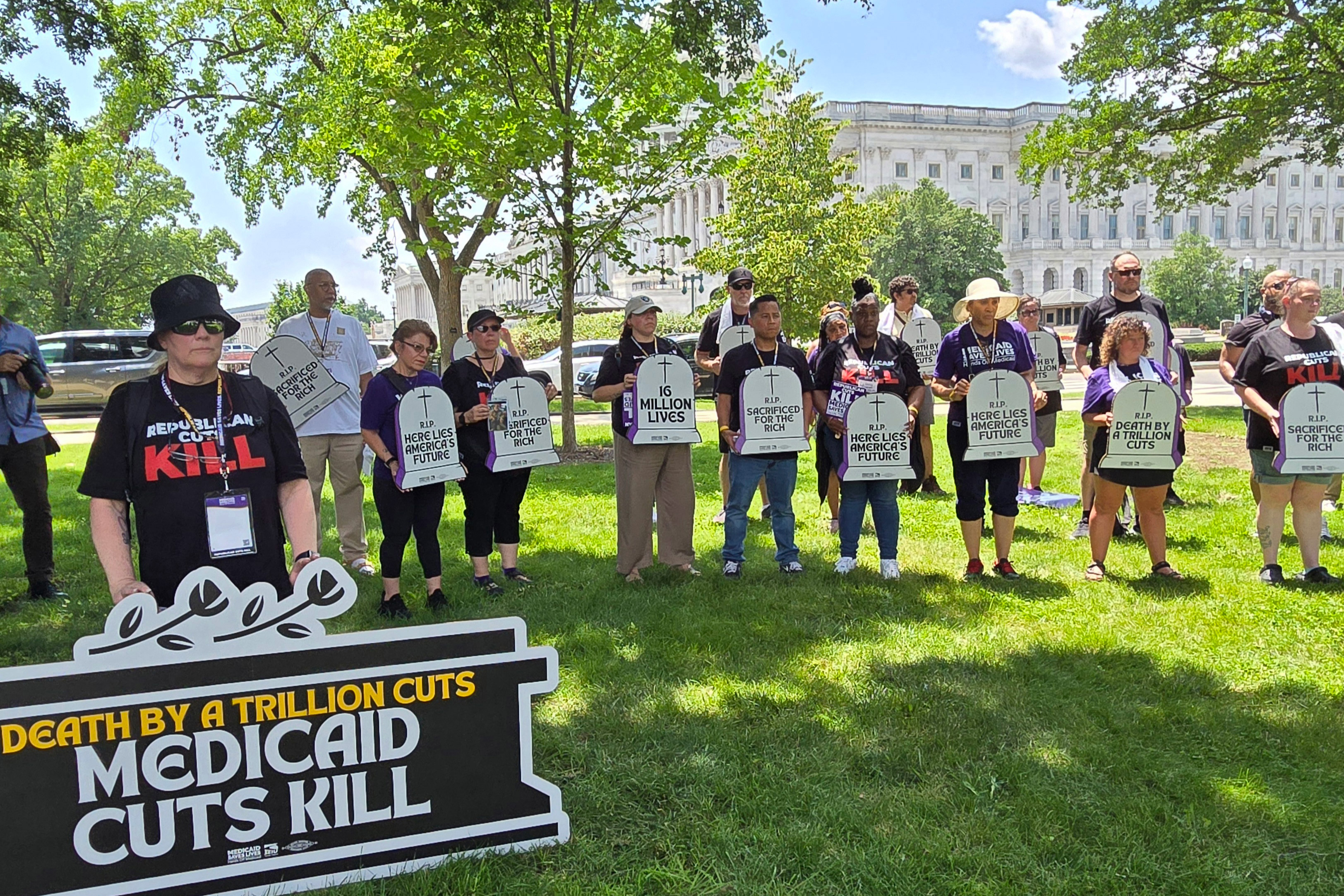
Too Sick To Work, Some Americans Worry Trump’s Bill Will Strip Their Health Insurance
-
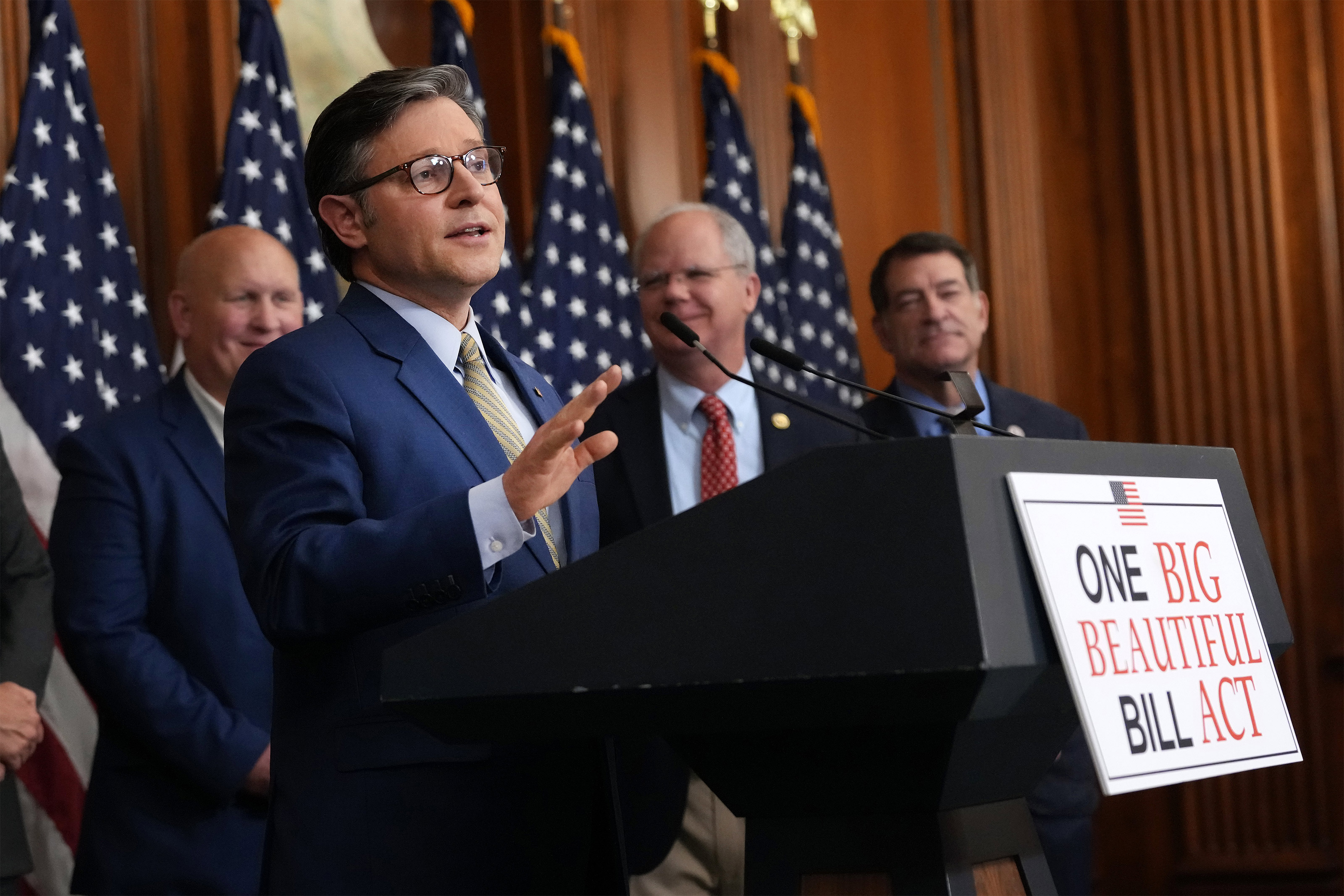
Republicanos buscan castigar a estados que ofrecen seguro de salud a inmigrantes sin papeles
-
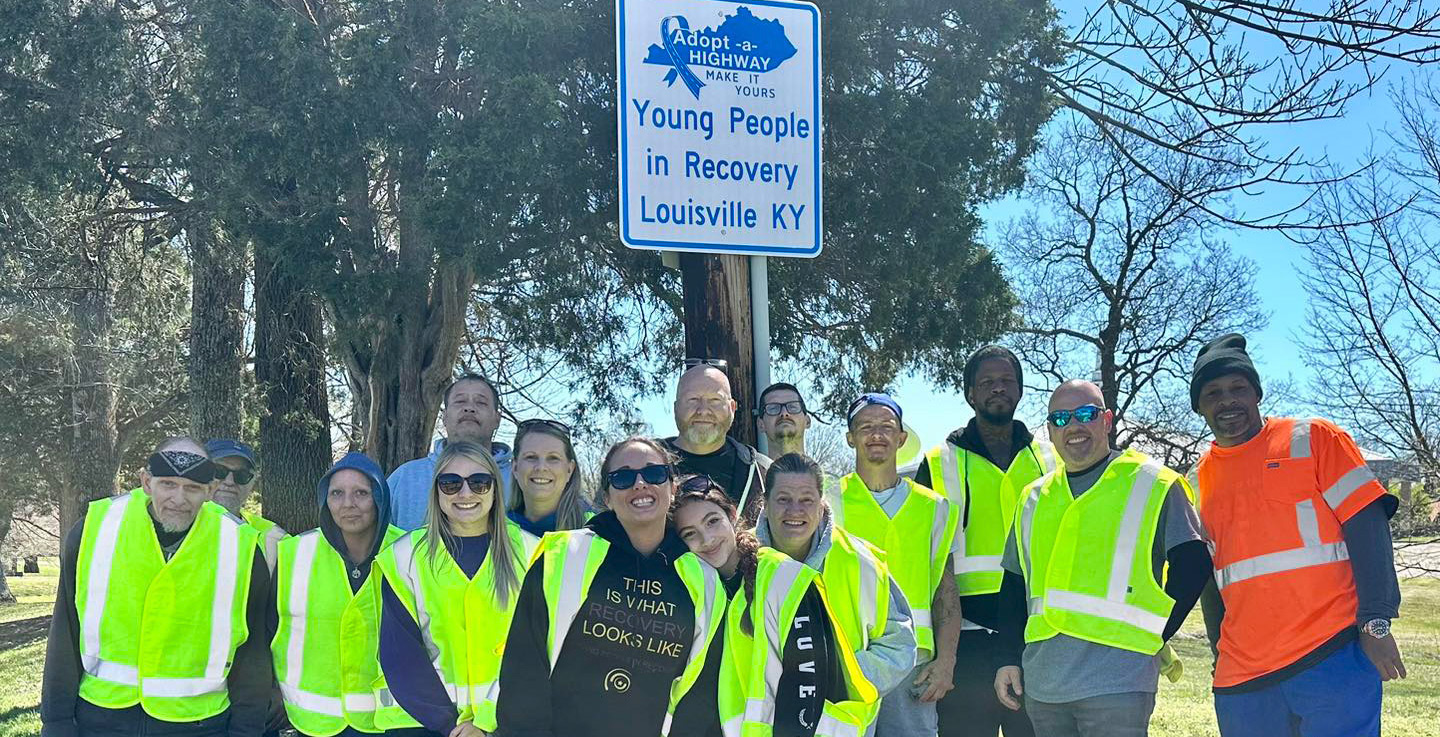
El costo humano de los recortes de Trump a los programas de tratamiento de adicciones
-

Caseworkers Coax Homeless People out of Las Vegas’ Tunnels for Treatment

